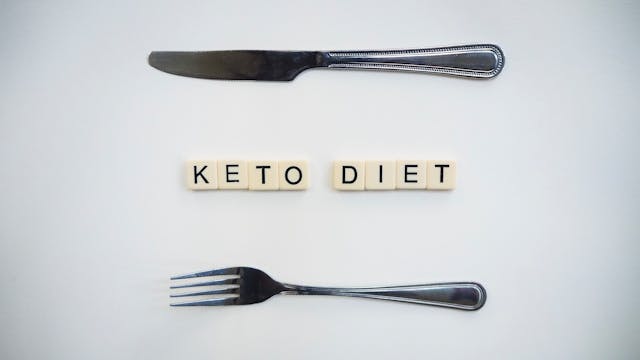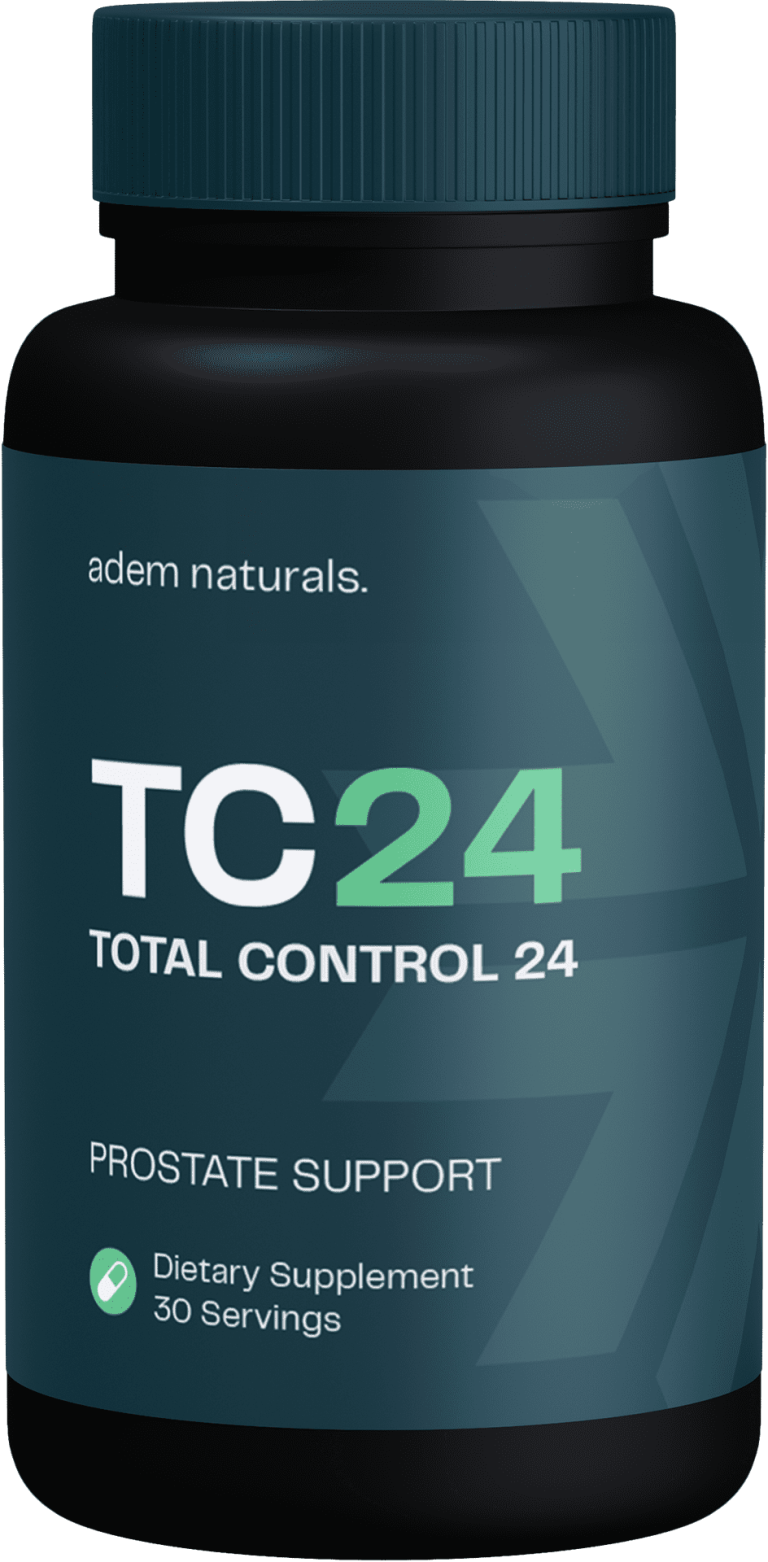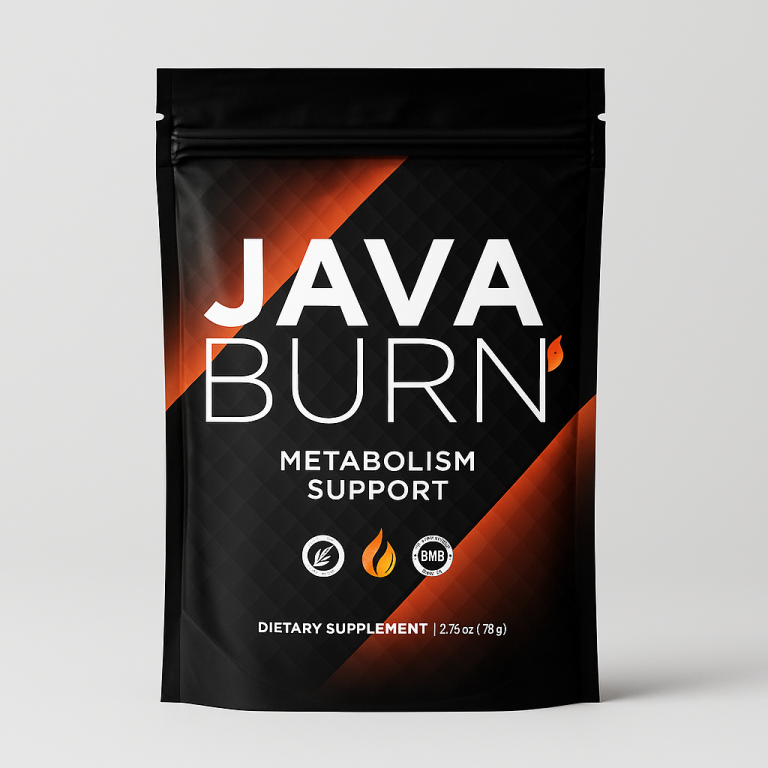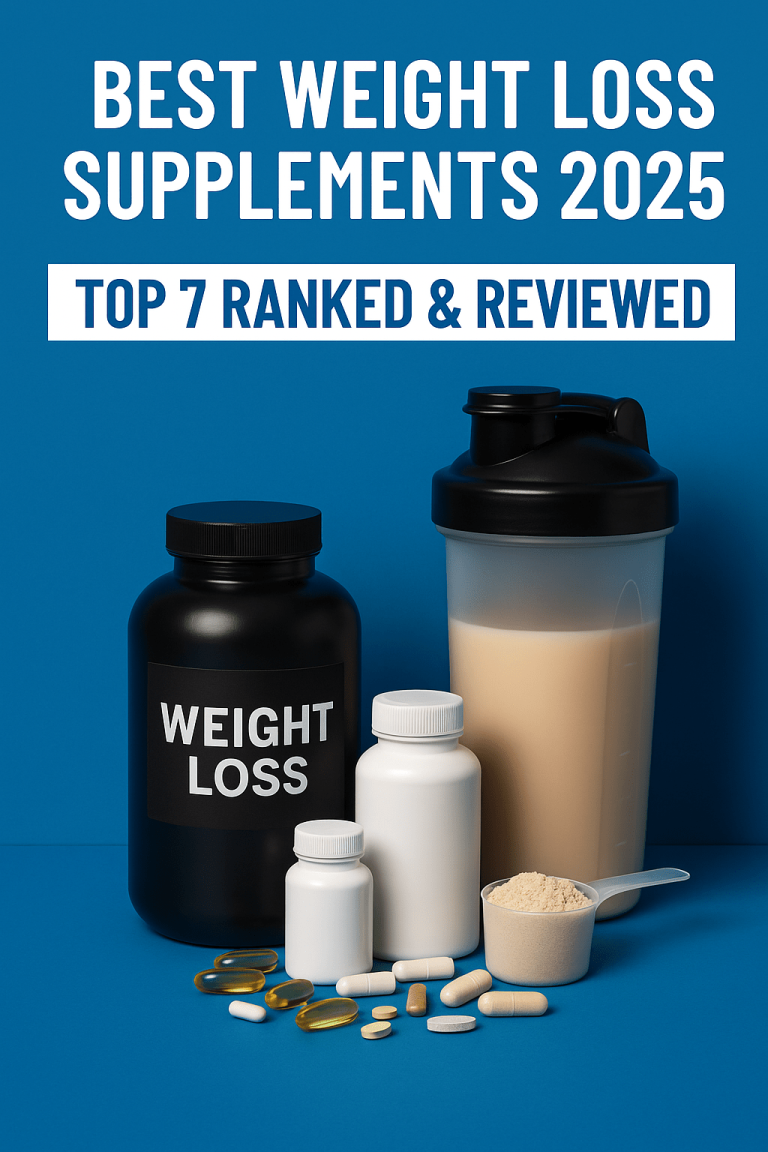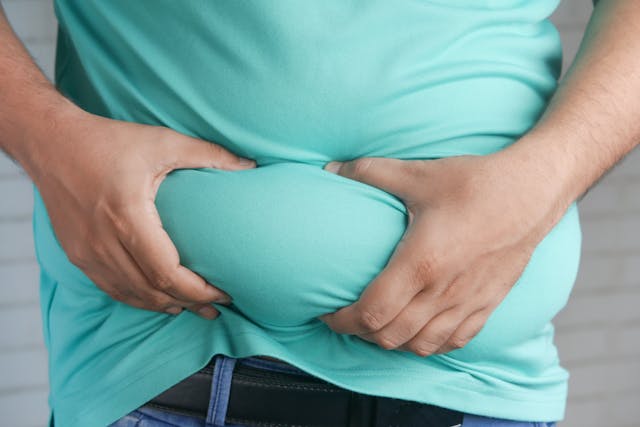Keto vs Intermittent Fasting: Which Works Faster for Fat Loss? [2025 Guide]
Keto vs Intermittent Fasting: Which Works Faster for Fat Loss? You want to see real progress with your fat loss, but time is tight. Most people ask if Keto vs Intermittent Fasting works faster, hoping for clear results they can use right away.
The truth is, both methods promise quick changes, especially when matched with home workout routines and smart nutrition.
Keto relies on low carbs to spark fat burning, while intermittent fasting limits when you eat to kickstart results.
For beginners, both pair well with clean eating and can support a fat-burning morning routine without locking you into long hours at the gym.
If you’re aiming for the fastest changes, Keto often shows results sooner, but long-term success comes from finding the best fit for your body and schedule.
Many fitness fans balance these strategies with practical habits, like getting fit without the gym and choosing the best supplements for fat loss.
Stick around to find out how each approach might work for your lifestyle—and how you can speed up your results, even if your days are busy. For more on how to build your own plan, check out these home workout routine tips.
Key Takeaways
Before you decide which approach—Keto or Intermittent Fasting—might work faster for you, let’s get clear on what each method offers, what sets them apart, and how they can fit alongside your other healthy habits.
This section pulls together the most practical lessons, so you can see where each strategy shines, what to expect, and which might be better for your unique rhythm and goals.
 Photo by Vanessa Ray
Photo by Vanessa Ray
What Keto Does Faster
Some people start dropping weight soon after switching to Keto. Your body taps into fat stores once carbs run low, causing quick changes on the scale—mostly from water loss at first, then steady fat loss.
This rapid response fires up motivation, especially if you track progress during your fat-burning morning routine or pair Keto with home workout routines.
Key points about Keto’s early results:
- Quick drop in water weight in the first week or two.
- Visible fat loss continues as long as carb intake stays low.
- Strong appetite control for many, making clean eating for beginners less of a struggle.
- Potential for faster muscle definition if you stick with steady strength training at home.
For more in-depth info on the science and studies comparing low-carb and keto diets to fasting methods, check out Intermittent fasting, balanced or a keto diet? Food for thought.
When Intermittent Fasting Shines
Intermittent Fasting often takes a little longer to show results, but many find it easier to stick with for the long haul.
Since you aren’t changing what foods you eat—just when—you might find it blends smoothly with your daily routine and other habits, like getting fit without the gym.
What makes Fasting a strong pick:
- Simplifies meal planning (just skip breakfast or dinner instead of overhauling your pantry).
- Supports fat burning even if you don’t follow a strict diet.
- Pairs well with busy lives, fitting around shifts, school, or family meals.
- Easy to combine with home workout routines so you don’t feel overextended.
You’ll find more insights and a dietitian’s balanced perspective in A Dietitian’s Take on keto vs intermittent fasting to lose weight.
Where Both Shine Together
You don’t have to choose one and never look back. Pairing Keto with Intermittent Fasting can give you the fastest results, especially if you’re focused on a busy fat-burning morning routine. Together, they can:
- Accelerate fat loss and appetite control
- Encourage clean eating for beginners by reducing snacking windows and cravings
- Help you stay consistent with your home workout routines or when you’re determined to keep getting fit without the gym
For more practical tips on how to blend these approaches, dive into building a home workout routine that delivers results.
Don’t Overlook Supplements
No matter which strategy you choose, the best supplements for fat loss can help maximize your work. Smart supplementation, when combined with clean eating and exercise, often gives an extra edge.
The right products can support steady energy, kick-start metabolism, and keep progress steady. If you’re curious about what’s out there, you can check current trends in the best fat burner supplements, or dig into scientific details with Dietary Supplements for Weight Loss.
When it comes to Keto vs Intermittent Fasting, both options can show fast results, especially if you add home workouts, quality fat-burning supplements, and clean eating for beginners.
The real key is finding which plan you can commit to—because staying consistent is what makes results stick.
Understanding Keto and Intermittent Fasting
Choosing a new approach for fat loss means getting to know the core routines behind each option.
Let’s break down exactly how the ketogenic diet and intermittent fasting work—especially for anyone focused on clean eating for beginners, home workout routines, or simply getting fit without the gym.
It’s all about building a system that matches your schedule and your goals.
The Ketogenic Diet: Core Principles and Fat-Burning Mechanisms
 Photo by Ronit HaNegby
Photo by Ronit HaNegby
The ketogenic diet (keto) flips how most people think about their meals. On keto, you keep carbs very low, fill in with moderate protein, and center your meals around healthy fats.
This switch changes how your body generates energy. Since your cells can’t grab quick energy from carbs, they burn stored fat instead. This process is called ketosis.
Why does this matter for fast results?
- Ketosis helps your body tap its fat stores as a main energy source.
- People often lose extra water weight first, then real fat, when starting out.
- Many find that appetite drops naturally, so sticking to clean eating for beginners feels easier.
Keto also pairs well with home workout routines. Since your body gets steady energy from fats, you won’t feel the blood sugar rollercoaster that sometimes hits during typical diet changes.
Your muscles use fat efficiently, so strength and energy stay steady—even if you’re focused on getting fit without the gym.
Some key keto benefits you’ll notice:
- Stable energy for morning home workouts
- Fewer cravings between meals
- Simple rules—just swap carb-heavy foods for veggies, nuts, and proteins
Ready to lay a strong foundation with food choices that fit both keto and healthy habits? See my Beginner’s Guide to Clean Eating.
Curious about all the science behind keto’s fat-burning power? You’ll find a deep dive in Ketogenic Diet – StatPearls.
Intermittent Fasting: The Science Behind the Approach
Intermittent fasting (IF) sets rules not for what you eat, but when you eat. With IF, your day breaks into periods: hours when you fuel your body, and hours when you don’t eat at all.
The most popular pattern is fasting for 16 hours (say, from dinner to a late breakfast), followed by an 8-hour eating window.
Why does this method support rapid fat burning?
- Your body uses stored energy, especially once you’ve fasted for 8–12 hours.
- Fasting ramps up fat-burning hormones in the morning, making it perfect to pair with home workout routines or a fat-burning morning routine.
- Many people feel more focused and energetic, so morning tasks don’t get skipped.
If you’re new, here are common intermittent fasting schedules:
- 16:8 (16 hours fast, 8 hours eating)
- 14:10 (easier for beginners)
- Alternate Day Fasting
Fasting also works well if your schedule is unpredictable. You don’t need to prep fancy meals—just keep track of your hours.
It’s flexible enough for busy mornings, packed evenings, or even when you’re traveling.
Want to learn about powerful ways to optimize your morning and maximize results? Explore my list of top morning fat burners.
You can also get a solid science-based overview in Intermittent Fasting: What is it, and how does it work?.
By understanding the “how” and “why” behind Keto vs Intermittent Fasting, you’re set to choose a method that matches your lifestyle, home workout routines, and long-term goals—especially if you want a plan that works with the time you’ve got.
Which Works Faster for Fat Loss? Comparing Keto and Intermittent Fasting
When considering Keto vs Intermittent Fasting, most people want to know which one gets results faster and which is easier to fit into a real, lived-in schedule.
Both have solid science supporting fat loss, but the way they work can lead to different results, both in the short run and over the months ahead.
Let’s compare how quickly each method works, how long you can expect progress to last, and who might benefit from each approach based on lifestyle and daily routines.
 Photo by Total Shape
Photo by Total Shape
Immediate Versus Long-Term Results: Compare Short-Term Rapid Weight Loss Versus Lasting Progress
If you’re in a hurry to see change, the ketogenic diet routinely creates faster initial fat loss for most people.
This quick shift is mostly due to a drop in water weight when you switch to low carbs, which helps people feel and see results early on.
By the end of the first week or two, many notice slimmer faces, a lower number on the scale, and pants that fit looser.
Key points about Keto’s speed:
- Rapid water loss in the first 7–14 days visibly drops weight for most.
- Fat burning increases as your body stays in ketosis, especially when paired with home workout routines or a fat-burning morning routine.
- Appetite falls for many people, which supports clean eating for beginners and helps curb mindless snacking.
- Those who stick with it while adding the best supplements for fat loss often feel a steady energy boost.
However, lasting results are about more than the first few pounds. Intermittent fasting might not offer that instant drop in weight, but it often delivers steady, manageable progress over weeks and months.
The routine is easier to maintain for many with packed calendars—especially since it focuses on when to eat instead of what to eat.
Why intermittent fasting wins on sustainability:
- Easy to stick to: You can fit fasting windows around work, family, or shift changes without needing to prep special meals.
- Reduces yo-yo dieting: With fewer food rules, it’s less likely you’ll binge or burn out after a strict phase.
- Smooth pairing with supplements: Many find it straightforward to use fat-burning supplements during eating windows to keep energy up and cravings down. If you want the latest, see these Top Weight Loss Supplements 2025.
- Research like this comparison study on keto and intermittent fasting shows that both methods fuel fat loss, but real-world sticking power matters more for long-term success.
For busy people, the right choice boils down to which approach fits into your life without feeling forced—or risking burnout.
Individual Differences: Which Method Suits Your Lifestyle?
Not everyone thrives on the same eating pattern. Keto appeals to those who like food structure and fast feedback, while intermittent fasting attracts people looking for less daily planning.
Keto is often best if:
- You want quick results to stay motivated.
- You are comfortable eating fewer carbs and can handle the first week transition (where your body adapts).
- You’re willing to plan meals and snacks, keeping “hidden” carbs in check.
- Pairing your diet with home workout routines and clean eating for beginners sounds appealing.
Intermittent fasting may be a better fit if you:
- Juggle an unpredictable or packed daily schedule.
- Prefer not restricting food choices, just timing.
- Like the flexibility to shift fasts around social life or work demands.
- Want something that is easy to combine with getting fit without the gym.
You don’t have to choose one over the other immediately. Some blend Keto with fasting for a double boost, especially if they enjoy a steady fat-burning morning routine. Still, fitting either approach into a real-life schedule is key. Busy people often find that the simplest plan is the one that lasts. If you need ideas or want proven strategies, my fitness guide for busy people lays out exactly how you can fit healthy habits into your day—even when you’re not hitting a gym.
Both options team up well with home workout routines and the right supplements. If you’re serious about maximizing your results with science-backed support, adding the best supplements for fat loss can help fill any gaps and speed up progress. For more on how fat-burners, protein, and vitamins can work with your meal plan, check out expert opinions like those found in Intermittent fasting, balanced or a keto diet? Food for thought.
The best method in the Keto vs Intermittent Fasting debate is the one you can consistently stick with. Once you match your eating habits to your life and pair them with regular movement, clean eating, and smart supplementation, rapid fat loss and lasting results can become your new normal.
Combining Keto and Intermittent Fasting for Fast Results
Pairing Keto and Intermittent Fasting (IF) can work like a well-balanced tag team for faster fat loss.
With the right plan, you make the most of what both strategies have to offer—using fat for fuel from the get-go and increasing the length of time your body burns it. This combo can fit around even the busiest lifestyle, especially if you want to squeeze in home workout routines and follow a fat-burning morning routine.
Let’s see how a day could look, how to eat clean as a beginner, and simple ways to keep moving even when you can’t get to a gym.
Sample Schedules and Meal Plans for Busy People

Photo by Nicola Barts
Getting started with Keto vs Intermittent Fasting doesn’t have to mean hours of food prep or complicated routines. Here’s what a typical day can look like if you combine both approaches for quick and steady results:
Sample Day (16:8 Intermittent Fasting Window, Keto Meals)
- 6:00 am: Wake up and hydrate (water, black coffee, or herbal tea). Try light movement—maybe a short walk, gentle stretching, or a quick bodyweight circuit. This sets up your fat-burning morning routine.
- 6:30 am–12:00 pm (Fasting Period): Continue fasting. Stick to water, plain coffee, or unsweetened tea.
- 12:00 pm (Break the Fast): Lunch with protein and healthy fats. Think spinach salad with chicken, avocado, olive oil dressing, and a sprinkle of seeds or nuts.
- 3:30 pm (Snack): If hungry, have a small snack like a boiled egg, a handful of almonds, or celery sticks with nut butter.
- 6:30 pm (Dinner): High-fat, moderate protein, low-carb dish. For example, salmon with roasted asparagus and a side of cauliflower mash.
- 8:00 pm: Kitchen closes—fasting window starts.
This type of schedule helps your body stay in ketosis while extending fasting benefits. Snacks are there for you on busier days but are optional if you feel satisfied.
Clean Eating for Beginners: Busy Person Tips
- Prep proteins in bulk (chicken, turkey, boiled eggs) to grab and go.
- Keep veggies washed and chopped in the fridge.
- Use healthy fats like olive oil, coconut oil, or avocado in meals.
- Skip packaged keto snacks. They save time but can slow your results with added carbs, fillers, or poor-quality fats.
I always recommend starting simple for clean eating, especially if you’re new. For more, see tips on clean eating for beginners.
Fat-Burning Morning Routine Kick off your day with habits that work with this program:
- Drink a tall glass of water right away.
- Move for at least 10 minutes (walk, stretch, or a quick at-home routine).
- Plan your meals and snacks so you’re not caught off guard by cravings.
- Hold off on your first meal until your eating window.
Many find that pairing these habits with the right fat-burning supplements gives an added boost. Curious about what works for busy lives? Check my Favorite Fitness Supplements for my real-world recommendations.
Quick Home Workouts for Any Schedule You don’t need a gym to stay active or see results. Try these strategies when combining Keto and IF:
- Short, intense bodyweight circuits (squats, push-ups, lunges, planks) for 10–15 minutes.
- Resistance bands and simple dumbbells at home.
- Fit in bits of exercise throughout the day—two sets of push-ups before lunch, or squats while waiting for your coffee to brew.
If you want more structure, explore the Workout Plans by Fit With Greg for clear routines that don’t require a gym.
Best Practices and Safety Pairing Keto with IF is safe for most healthy adults, but rushing in can cause fatigue, headaches, or cravings as your body adjusts. Always ease in:
- Start by extending your fasting window by an hour or two every few days.
- Choose whole foods and keep your electrolytes balanced.
- If taking new fat-burning supplements or making big changes, always check with a healthcare professional.
Synergy With Supplements Combining both strategies can amplify results. Supplements like quality protein, magnesium, and caffeine-based fat burners can aid energy and focus, filling in nutritional gaps that might come with a more limited eating window. The right products make it much easier to stay on track with your home workout routines.
To see exactly what I use and why, check out my detailed breakdown at Favorite Fitness Supplements.
If you love the flexibility of getting fit without the gym, you’ll find more ideas to amplify your plan in my Ultimate Home Fitness Stack.
Building the right daily rhythm with Keto vs Intermittent Fasting, clean eating, and targeted supplements means fat loss can fit smoothly into your life—however busy you are.
Potential Risks and Considerations
Choosing between Keto vs Intermittent Fasting is not just about what brings faster results—it’s also about staying safe, making lasting changes, and avoiding common pitfalls. Both methods can work well for busy people, but there are important factors to weigh before you jump in.
Let’s unpack the biggest risks, who should pause or avoid these approaches, mistakes to look out for, and how to make a smooth transition while keeping your body in balance.

Photo by mali maeder
Who Should Avoid Keto or Intermittent Fasting?
Keto and intermittent fasting work for many, but not all. There are groups who need to use extra caution or choose a different path.
- Pregnant or breastfeeding women: Rapid changes in eating can impact energy and nutrition for both mother and child. Speak to a medical pro first.
- People with diabetes or blood sugar issues: Both Keto and IF shift how the body manages glucose. This can cause dangerous swings if you use insulin or certain meds.
- Anyone with a history of eating disorders: Restrictive routines, whether it’s carbs or meal windows, can trigger relapse for some.
- Kids and teens: Growing bodies need steady nutrition, not strict eating patterns.
- Chronic health conditions: If you have kidney, liver, or heart disorders, consult your doctor before you try either method.
Listening to your body and understanding your health history always comes first. If you feel off or notice changes in energy, mood, or digestion, don’t push through—adjust your plan or check in with a professional.
Common Pitfalls and Mistakes to Avoid
With Keto vs Intermittent Fasting, some stumbles tend to show up again and again. Here are some of the most common mistakes people make, along with tips for sidestepping them:
- Jumping in too fast: Starting strict Keto or long fasting windows overnight can leave you feeling sluggish and irritable. Start slow; let your body adjust.
- Not eating enough nutrient-rich foods: Whether skipping meals or cutting carbs, aim for plenty of veggies, lean proteins, and healthy fats. Avoid filling up on processed “keto snacks” or empty calories.
- Neglecting hydration and electrolytes: Low-carb and fasting routines flush water and sodium from the body, sometimes leading to “Keto flu” symptoms—headaches, muscle cramps, and fatigue.
- Ignoring hunger or over-restriction: Listening to real hunger cues supports long-term results. If you’re tired, dizzy, or moody, loosen up your plan or add healthy fuel.
- Overlooking simple movement: Pairing either approach with light activity matters. Even a quick stroll or a fat-burning morning routine can support better results and boost your mood.
Simple steps and common sense can help you skip these bumps in the road, keeping your progress steady without burnout.
Transitioning Safely Into Keto or Intermittent Fasting
Switching up your nutrition or meal schedule doesn’t have to be all or nothing. Easing in, watching for signs, and focusing on the basics is the best way to avoid crash landings.
- Start by shifting one habit at a time. For Keto, try dropping carb-heavy snacks first, then shift your main meals. For fasting, push breakfast back by an hour or stop eating earlier at night.
- Prioritize hydration and electrolytes. Drink water throughout the day and consider adding a pinch of salt or eating potassium-rich foods, especially if you feel extra tired.
- Prep your meals and snacks ahead. Clean eating for beginners is easier when you’re not hungry and rushing. Keep meals simple—grilled chicken, eggs, vegetables, and healthy oils.
- Pair changes with light activity. Even if you’re getting fit without the gym, home workout routines like easy bodyweight exercises help your metabolism adapt.
- Check in with yourself often. If cravings spike or you feel run down, add back a simple snack or shorten your fasting window for a few days.
Transitioning is less about “perfect” days, more about keeping things honest and manageable. You’re not in a rush—steady beats sudden every time when it comes to long-term success.
Learning to Listen to Your Body
No two bodies react the same way to Keto vs Intermittent Fasting, especially when work, family, and fitness juggle for attention. Balancing energy, cravings, focus, and mood is essential.
- Make room for flexibility. Plans work better when you adjust for busy weeks or stressful days. One missed fasting window or meal high in carbs isn’t the end.
- Notice small wins. More energy in the morning, easier clean eating, or feeling good during home workout routines are signs you’re on the right path.
- Stay in tune with lasting change. Instead of chasing fast drops on the scale, look for better sleep, less bloating, and slow shifts in body shape or strength.
If you want extra strategies to make your transition easier, I recommend these natural fat burning tips—they work for anyone starting out, especially when paired with the best supplements for fat loss or simple home routines.
Final Reminders on Fat-Burning Supplements and Busy Schedules
For many juggling a packed schedule, smart fat-burning supplements can help fill gaps or support energy—just avoid using them as a quick fix or reason to cut calories too low.
- Choose quality over quick promises. The best supplements for fat loss make a difference when paired with good food and home workout routines.
- Stay focused on progress, not perfection. Small shifts add up fast, especially if you build a fat-burning morning routine that starts your day strong.
Above all, remember this: consistency is your secret weapon. With mindful attention and a gentle start, both Keto and intermittent fasting can boost confidence and get you closer to your goals—safely and sustainably.
Frequently Asked Questions: Keto vs Intermittent Fasting
When it comes to Keto vs Intermittent Fasting, everyone seems to have a few burning questions.
Whether you want to know about results, safety, or how these plans fit daily life, you’re not alone. Let’s tackle the most common questions with clear, trustworthy answers to help you feel confident choosing your next step.
Does Keto or Intermittent Fasting Work Faster for Fat Loss?
Most people see faster changes with Keto in the first week or two. This is often due to your body losing water weight as it shifts away from carbs.
Fat loss comes next if you stick with the plan. Intermittent fasting can bring steady, gradual results. While not always as dramatic up front, some find it easier to continue long term.
For a solid look at how the two stack up, Weight loss: keto vs. intermittent fasting explains results and potential hurdles.
Can I Combine Keto with Intermittent Fasting?
Absolutely. Many people combine both to get the speed of Keto and the sustainability of fasting.
This can keep your body in fat-burning mode longer each day, especially when you anchor your morning with a fat-burning routine and home workout sessions.
If you want a smart way to blend the two, start with a 16:8 fasting window and a basic Keto meal plan. This approach fits easily alongside clean eating for beginners.
Are There Any Side Effects I Should Watch Out For?
Both plans come with potential side effects, especially in the early stages. Some people experience headaches, low energy, or “Keto flu” (which can feel like fatigue, brain fog, or muscle cramps as your body adapts).
Fasting may trigger hunger, irritability, or trouble focusing at first.
The good news? Most of these symptoms fade after the first week or two.
Staying hydrated, eating enough minerals, and resting will help you manage the adjustment. For a balanced, evidence-based view, check out Intermittent fasting, balanced or a keto diet? Food for thought.
What Are the Best Supplements for Fat Loss When Following These Plans?
Smart, science-backed supplements make a difference, especially when life gets hectic. Look for:
- Electrolytes (sodium, magnesium, potassium) to ease your transition and maintain energy.
- Protein powder to hit your protein goals on Keto or during eating windows with fasting.
- Caffeine-based fat burners if you need a gentle boost for your morning routine or home workout.
You can explore more on how to pick fat-burning supplements that really work in my Favorite Fitness Supplements.
Can I Still Get Fit Without the Gym on Keto or Intermittent Fasting?
It’s not only possible—it’s practical. Both plans pair well with home workout routines, bodyweight moves, and habits that don’t require equipment.
Whether you’re squeezing in a ten-minute circuit before work or biking with the kids, you’ll still see results. If you need ideas, my guide for getting fit without the gym has plenty to help you stay on track.
How Do I Start Clean Eating as a Beginner While Doing Keto or Fasting?
Start simple. Focus on whole foods—lean proteins, veggies, healthy fats, and a lot of water. Skip packaged snacks labeled “Keto” and avoid sugary drinks during your eating windows.
Meal prep makes life easier, especially with a busy schedule. Find tips for real-world meal planning in my clean eating for beginners overview.
Should I Worry About Losing Muscle on Either Plan?
Muscle loss isn’t a guarantee if you do things right. On Keto, make sure you eat enough protein.
Fasting works best when you fit resistance exercises into your week. Both methods get better results with short, smart home workout routines and attention to your daily protein intake.
If you’re focused on muscle and strength, include protein-rich foods and don’t skip your regular home movement.
What If I Have Health Issues or Take Medication?
People with certain health conditions (like diabetes, heart concerns, or a history of eating disorders) need to tread carefully with both options. Pregnant women or those who are breastfeeding should also talk to a doctor before any major changes.
Reliable sources like A Dietitian’s Take on keto vs intermittent fasting to lose weight walk through these details in more depth.
How Do I Stay Consistent with Keto or Intermittent Fasting on a Busy Schedule?
Consistency comes from habits and prepping ahead, not willpower alone. Practice a fat-burning morning routine, batch cook when you can, and set up your day to fit your eating style. Having simple backup meals and quick home workouts can make all the difference.
Asking these questions means you’re ready to make a real change. Use the strategies and resources above to set yourself up for results you’ll notice—no matter how busy your life gets.
Conclusion
Keto tends to work faster up front, often bringing visible changes in the first weeks for those ready to stick to lower carb meals and a routine of clean eating for beginners.
Intermittent fasting may show slower initial results, but it fits well with busy lives and can be easier to maintain over time. Choosing the best approach isn’t about speed alone—it’s about what matches your daily rhythm, your commitment to home workout routines, and your own energy needs.
My advice is to pick the strategy you feel you can stick with, or try a blend of both if your schedule allows. Pair your choice with small steps in clean eating and simple movement.
If you want extra support on fat-burning supplements and clear reviews, take a look at my honest Java Burn Review to see how this popular option stacks up for real-world results.
No matter where you begin, lasting results come from steady habits and a plan that adapts with you. If you need inspiration or want to learn more about fit strategies designed for real people, see how Our Mission at Fit With Greg supports you at every step.
Which approach fits your life right now? Let me know in the comments below—your feedback helps shape what I share next. Thank you for following along and investing in your own progress.

